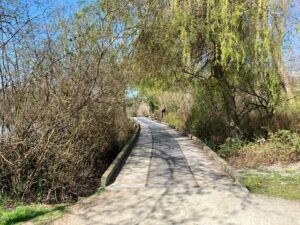
After attending the Virtual Symposium this week, I reflected on the ideas and themes that resonated with me from a dental professional perspective. I questioned the ideas of open learning, collaboration and potential opportunities within dental. According to Cormier (2017, 49:10), “Most people don’t care where you got your degree from…there are very few jobs where people actually care what you know”. This broad general statement may apply to many work sectors however, this is not the case with dental hygiene education in British Columbia.
Although you do not need a degree to be licensed in BC, there is status associated with some programs and there is stigma with others. There are 6 accredited dental hygiene programs in BC and 1 degree program. Many graduates complete a 2 year diploma program with the option of completing a degree through online studies. 1 of the dental hygiene programs is private; 18 months in length with a considerably higher tuition cost. The main difference between the diploma and degree is the ability to own a private independent dental hygiene practice.
I have worked in the dental field for over 15 years and know discrimination exists based on where you received your education. I have had many conversations with employers, colleagues, students and educators who confirmed that some programs have higher status. Employers/dentists do care where you were trained because dental hygiene programs are not seen as equal, even though all dental hygiene students need to pass the same National Board exam.
With the idea that dental hygiene education programs are not seen as equal, is there an opportunity to create an Open Educational Practice or Open Educational Resources? Are some of these institutions territorial of their work due to a long standing history and not willing to share? Coolidge (2021, 50:20), stressed “…the ability to share materials in a variety of formats is incredibly vital”. This has resonated with me and made me continue to ask the question: does open sharing of work exist in dental?
Most recently, the 4 regulatory Oral Health Colleges in BC worked quickly and collaboratively in the early stages of the COVID pandemic to create the Oral Health Care during Phases 2 and 3 of the COVID-19 Response document. The British Columbia Dental Association and the British Columbia Dental Hygienists’ Association hosted a joint webinar for their members about returning to practice. Prior to COVID, the Oral Health Colleges and Associations worked in their silos with little to no collaboration among the groups.
These groups working together highlight some of the points raised in Harris’ session. Harris (2021, 25:01) said, “No one person can do it all. It’s the strength of the team that allows you to succeed”. These groups identified the need to work together to ensure safety of the public and their members; egos were put aside.
Moving forward, I would like to take Harris’ (2021, 23:24) question forward, “Where do I fit in here?” I see lots of potential opportunities to advocate for changes needed in dental hygiene education which involve technology. With the sudden pivot last year to online learning, are institutions willing to share resources for others to use or create a community of practice that is inclusive to all? I plan to initiate some conversations with the leads of some of these dental hygiene programs to identify gaps and search for possible solutions.
References:
British Columbia Dental Association & British Columbia Dental Hygienists’ Association. (2020, June 6). BCDA/BCDHA: Return to work forum. [PowerPoint slides]. Vimeo. https://vimeo.com/426018914/72c8792015
College of Dental Hygienists of BC, College of Dental Surgeons of BC, College of Dental Technicians of BC & College of Denturists of BC. (2020, August 18). Oral Health Care during Phase 2 and 3 of the COVID-19 Response. CDHBC. https://www.cdhbc.com/News-Events/COVID-19/Oral-Healthcare-Phase-2-and-3-IPAC-August-18-2020.aspx
Coolidge, A. (2021, April 12). Open Education: what it is; what it does and its amazing impact! [Blackboard Collaboration presentation]. http://bit.ly/CoolidgeVS2021
Cormier, D. (2017, April 18). Intentional messiness of online communities. [Blackboard Collaboration presentation]. https://malat-coursesite.royalroads.ca/lrnt521/dave-cormier-virtual-symposium-presentation/
Harris, C. (2021, April 14). The person in the middle of the road: one educators journey supporting training and education. [Blackboard Collaboration presentation]. http://bit.ly/HarrisVS2021